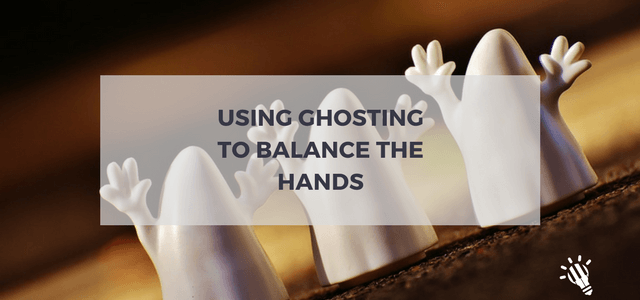There comes a time when every pianist has to learn the art of playing louder with one hand than the other in order to bring out a melody, but what’s the best way of teaching this vital skill?
You can find pieces that introduce this idea as early as the first method books – often a waltz with an oom-pah-pah bass in the left hand and a simple melody in the right (sometimes swapping half way through). Although it’s easy for beginners to simply play it as written and not worry about bringing out the melody, I believe this is a skill that should be introduced as early as possible so that it will hopefully come naturally in the future.
Balancing the hands like this is a difficult and complex process for the brain and takes considerable concentration and, of course, practice. So what’s the best teaching method for practising this skill? I call it ghosting and here’s how I use it with my students.
Changing the emphasis of one hand over the other is really all about a differentiation of weight, so one way I explain it (thanks to my childhood teacher for introducing this method) is that it’s like you’ve got a brick on your right hand (if that has the melody) while your left hand is as light as a feather and just floating away. Although this is a good way to visualise what’s required, it doesn’t often help make it any easier to do in practice.
The idea of “ghosting” with one hand means that a student plays the piece as written but with the left hand (or whichever hand needs to be quieter) playing silently on top of the keys. The fingers of the ghosting hand should lift only a couple of centimetres above each key as they ghost in order to show how it would feel to be pressing them for real. In this way, it’s like the key bed is now on the top surface of the key and so they are just playing invisible keys above the real ones.
Students will often find this tricky at first as they are used to hearing sound when they are playing. Get them to try it with the ghosting hand only first, then hands together with one hand ghosting. It can be frustrating at first and can seem to a student like a waste of time, but it’s a guaranteed time-saver in the long run.
When a student is able to ghost the passage perfectly and you can see they are playing all the right keys and rhythms, all you need to do is ask them to apply a tiny bit more weight to their ghosting hand so that each key gets depressed very lightly. Voila! All going well, one hand will be louder than the other without a lot more thought.
Now that your student realises that he/she can do this, all they need to do is vary the amount of weight used by the ghosting hand in order to get the balance between melody and accompaniment that they desire.
Try it out and let me know how it goes!

Jayson Fish says:
Thank you Tim for your website and Members community. A great foundation for Musicians to begin or continue their teaching career with effective techniques, guidelines and understanding. Much needed. Thanks
Cross Eyed Pianist says:
Very helpful post, Tim! I’m going to try this with a couple of my students who are learning a left-hand study (Allegro non Troppo/Gurlitt – Trinity GH Grade 2) where balance between the hands is crucial.
timtopham says:
Glad you found it useful – I still use this technique regularly when I need to get something pianissimo. My teacher tells me to “silent practice” all the time 🙂